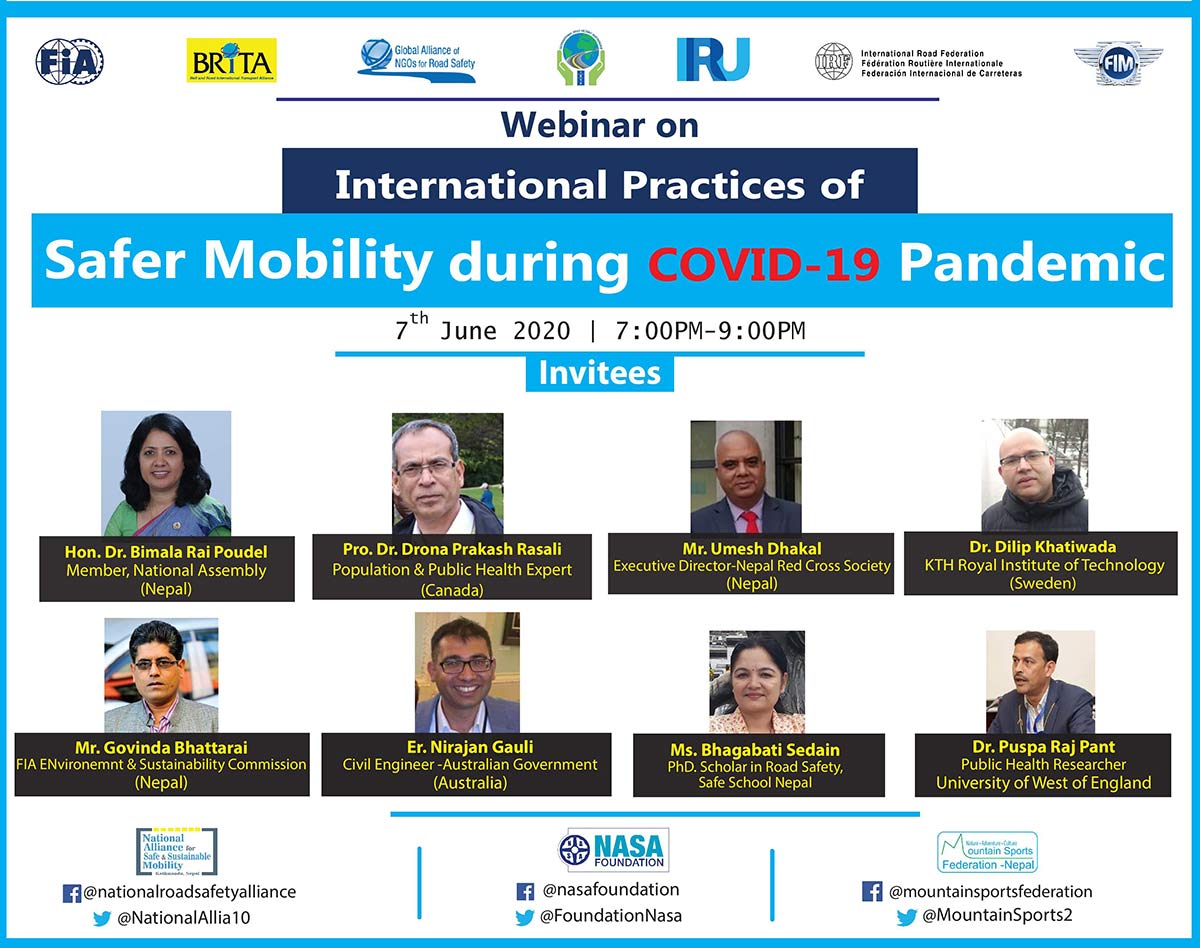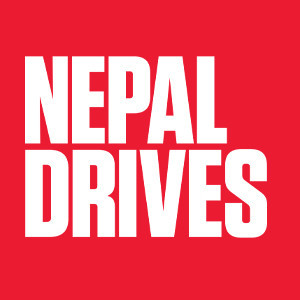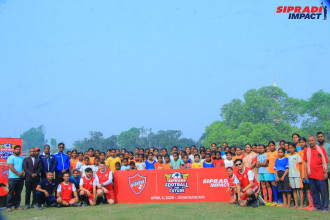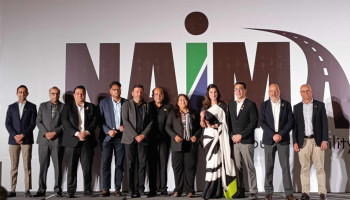National Alliance for Safe and Sustainable Mobility (NASSM) recently organised a webinar on 'International Practices for Safer Mobility During COVID-19'. The webinar highlighted the best practices adopted by different countries to manage their public transportation system during the COVID-19 pandemic. The webinar which lasted for two and a half hours was attended by about 60 individuals from 12 countries. At the beginning of the program, Govinda Bhattarai, on behalf of the Alliance, gave a welcome address on how to normalize public transport and human movement during and after the pandemic. He hoped that this group of experts would contribute to lay the groundwork for factual road safety and safer mobility in Nepal. Dr. Pushpa Raj Panta, a Research Fellow at the University of the West of England, moderated the event. The panelists were Dr. Drona Prakash Rasaili (Canada), Dr. Dilip Khatiwada (Sweden), Er. Nirajan Gauli (Australia), Umesh Dhakal, and Hon. Dr. Bimala Rai Poudel from Nepal.In the first presentation, Nirajan Gauli, an engineer working as a local government transport manager in Melbourne, Australia, gave examples of how Australia made mass transportation safer without a lockdown. However, he elaborated on the safety measures taken there and said that not even a single bus driver was infected during the entire period of COVID-19. According to him, maintaining social distance is only the best way. Gauli is a civil engineer and manages various local government and other projects in Australia.In the second presentation, Dr. Drona Prakash Rasaili gave an example of how public health services are mobilized in the federal structure of Canada and how public health disasters are addressed. Dr. Rasaili is working as an epidemiologist at the Center for Disease Control in British Columbia. He explained how Canada also secured the movement of people without any delay. However, he emphasized that there is a need to stay focused as the infection rate is still very high. For example, buses can be operated only through the back door and digitisation of the ticketing system. He also said that the data would be of great help in fighting various epidemics and risks, adding that attention should also be paid to strengthening the data system.
At the beginning of the program, Govinda Bhattarai, on behalf of the Alliance, gave a welcome address on how to normalize public transport and human movement during and after the pandemic. He hoped that this group of experts would contribute to lay the groundwork for factual road safety and safer mobility in Nepal. Dr. Pushpa Raj Panta, a Research Fellow at the University of the West of England, moderated the event. The panelists were Dr. Drona Prakash Rasaili (Canada), Dr. Dilip Khatiwada (Sweden), Er. Nirajan Gauli (Australia), Umesh Dhakal, and Hon. Dr. Bimala Rai Poudel from Nepal.In the first presentation, Nirajan Gauli, an engineer working as a local government transport manager in Melbourne, Australia, gave examples of how Australia made mass transportation safer without a lockdown. However, he elaborated on the safety measures taken there and said that not even a single bus driver was infected during the entire period of COVID-19. According to him, maintaining social distance is only the best way. Gauli is a civil engineer and manages various local government and other projects in Australia.In the second presentation, Dr. Drona Prakash Rasaili gave an example of how public health services are mobilized in the federal structure of Canada and how public health disasters are addressed. Dr. Rasaili is working as an epidemiologist at the Center for Disease Control in British Columbia. He explained how Canada also secured the movement of people without any delay. However, he emphasized that there is a need to stay focused as the infection rate is still very high. For example, buses can be operated only through the back door and digitisation of the ticketing system. He also said that the data would be of great help in fighting various epidemics and risks, adding that attention should also be paid to strengthening the data system. In the third presentation, Dr. Dilip Khatiwada, Assistant Professor and Mechanical Engineer at the Royal Institute of Technology in Stockholm, Sweden, highlighted the work done by Sweden for safe and sustainable transport during the COVID-19 outbreak. He said that there were no major casualties in Sweden because people supported the fight against the disease on the basis of faith. He also stressed on the importance of walking or using bicycles in short to medium distances, and a greater priority to focus on sustainable development goals to address the challenges posed by COVID-19.Similarly, Umesh Dhakal - Executive Director of Nepal Red Cross Society, said that a new system has been set up to manage the ambulance carrying patients of COVID-19 in the country without any contact between the driver and the patient. He also said that the Red Cross Society has been providing public awareness, education, and training to road safety volunteers on road safety for a very long time now. Dhakal is also a board member of the National Alliance for Safe and Sustainable Mobility.In the same webinar, Ashish Gajurel - Secretary General, NASA, said that the traffic situation in Nepal has deteriorated during normal times and even more complicated during this epidemic. In the end, Dr. Vimala Rai Poudyal – National Assembly Member, expressed her gratitude to all including the organizers as she was impressed by all the presentations and the views expressed by the expert speakers could guide her personally and the government.Bhagwati Sedhai, Board Member - NASA Foundation, presented the views of all the speakers at the webinar with her conclusory remarks. Nepal has yet to do its homework for safe movement and safe mobility as compared to other developed countries of the world.
In the third presentation, Dr. Dilip Khatiwada, Assistant Professor and Mechanical Engineer at the Royal Institute of Technology in Stockholm, Sweden, highlighted the work done by Sweden for safe and sustainable transport during the COVID-19 outbreak. He said that there were no major casualties in Sweden because people supported the fight against the disease on the basis of faith. He also stressed on the importance of walking or using bicycles in short to medium distances, and a greater priority to focus on sustainable development goals to address the challenges posed by COVID-19.Similarly, Umesh Dhakal - Executive Director of Nepal Red Cross Society, said that a new system has been set up to manage the ambulance carrying patients of COVID-19 in the country without any contact between the driver and the patient. He also said that the Red Cross Society has been providing public awareness, education, and training to road safety volunteers on road safety for a very long time now. Dhakal is also a board member of the National Alliance for Safe and Sustainable Mobility.In the same webinar, Ashish Gajurel - Secretary General, NASA, said that the traffic situation in Nepal has deteriorated during normal times and even more complicated during this epidemic. In the end, Dr. Vimala Rai Poudyal – National Assembly Member, expressed her gratitude to all including the organizers as she was impressed by all the presentations and the views expressed by the expert speakers could guide her personally and the government.Bhagwati Sedhai, Board Member - NASA Foundation, presented the views of all the speakers at the webinar with her conclusory remarks. Nepal has yet to do its homework for safe movement and safe mobility as compared to other developed countries of the world.
 At the beginning of the program, Govinda Bhattarai, on behalf of the Alliance, gave a welcome address on how to normalize public transport and human movement during and after the pandemic. He hoped that this group of experts would contribute to lay the groundwork for factual road safety and safer mobility in Nepal. Dr. Pushpa Raj Panta, a Research Fellow at the University of the West of England, moderated the event. The panelists were Dr. Drona Prakash Rasaili (Canada), Dr. Dilip Khatiwada (Sweden), Er. Nirajan Gauli (Australia), Umesh Dhakal, and Hon. Dr. Bimala Rai Poudel from Nepal.In the first presentation, Nirajan Gauli, an engineer working as a local government transport manager in Melbourne, Australia, gave examples of how Australia made mass transportation safer without a lockdown. However, he elaborated on the safety measures taken there and said that not even a single bus driver was infected during the entire period of COVID-19. According to him, maintaining social distance is only the best way. Gauli is a civil engineer and manages various local government and other projects in Australia.In the second presentation, Dr. Drona Prakash Rasaili gave an example of how public health services are mobilized in the federal structure of Canada and how public health disasters are addressed. Dr. Rasaili is working as an epidemiologist at the Center for Disease Control in British Columbia. He explained how Canada also secured the movement of people without any delay. However, he emphasized that there is a need to stay focused as the infection rate is still very high. For example, buses can be operated only through the back door and digitisation of the ticketing system. He also said that the data would be of great help in fighting various epidemics and risks, adding that attention should also be paid to strengthening the data system.
At the beginning of the program, Govinda Bhattarai, on behalf of the Alliance, gave a welcome address on how to normalize public transport and human movement during and after the pandemic. He hoped that this group of experts would contribute to lay the groundwork for factual road safety and safer mobility in Nepal. Dr. Pushpa Raj Panta, a Research Fellow at the University of the West of England, moderated the event. The panelists were Dr. Drona Prakash Rasaili (Canada), Dr. Dilip Khatiwada (Sweden), Er. Nirajan Gauli (Australia), Umesh Dhakal, and Hon. Dr. Bimala Rai Poudel from Nepal.In the first presentation, Nirajan Gauli, an engineer working as a local government transport manager in Melbourne, Australia, gave examples of how Australia made mass transportation safer without a lockdown. However, he elaborated on the safety measures taken there and said that not even a single bus driver was infected during the entire period of COVID-19. According to him, maintaining social distance is only the best way. Gauli is a civil engineer and manages various local government and other projects in Australia.In the second presentation, Dr. Drona Prakash Rasaili gave an example of how public health services are mobilized in the federal structure of Canada and how public health disasters are addressed. Dr. Rasaili is working as an epidemiologist at the Center for Disease Control in British Columbia. He explained how Canada also secured the movement of people without any delay. However, he emphasized that there is a need to stay focused as the infection rate is still very high. For example, buses can be operated only through the back door and digitisation of the ticketing system. He also said that the data would be of great help in fighting various epidemics and risks, adding that attention should also be paid to strengthening the data system. In the third presentation, Dr. Dilip Khatiwada, Assistant Professor and Mechanical Engineer at the Royal Institute of Technology in Stockholm, Sweden, highlighted the work done by Sweden for safe and sustainable transport during the COVID-19 outbreak. He said that there were no major casualties in Sweden because people supported the fight against the disease on the basis of faith. He also stressed on the importance of walking or using bicycles in short to medium distances, and a greater priority to focus on sustainable development goals to address the challenges posed by COVID-19.Similarly, Umesh Dhakal - Executive Director of Nepal Red Cross Society, said that a new system has been set up to manage the ambulance carrying patients of COVID-19 in the country without any contact between the driver and the patient. He also said that the Red Cross Society has been providing public awareness, education, and training to road safety volunteers on road safety for a very long time now. Dhakal is also a board member of the National Alliance for Safe and Sustainable Mobility.In the same webinar, Ashish Gajurel - Secretary General, NASA, said that the traffic situation in Nepal has deteriorated during normal times and even more complicated during this epidemic. In the end, Dr. Vimala Rai Poudyal – National Assembly Member, expressed her gratitude to all including the organizers as she was impressed by all the presentations and the views expressed by the expert speakers could guide her personally and the government.Bhagwati Sedhai, Board Member - NASA Foundation, presented the views of all the speakers at the webinar with her conclusory remarks. Nepal has yet to do its homework for safe movement and safe mobility as compared to other developed countries of the world.
In the third presentation, Dr. Dilip Khatiwada, Assistant Professor and Mechanical Engineer at the Royal Institute of Technology in Stockholm, Sweden, highlighted the work done by Sweden for safe and sustainable transport during the COVID-19 outbreak. He said that there were no major casualties in Sweden because people supported the fight against the disease on the basis of faith. He also stressed on the importance of walking or using bicycles in short to medium distances, and a greater priority to focus on sustainable development goals to address the challenges posed by COVID-19.Similarly, Umesh Dhakal - Executive Director of Nepal Red Cross Society, said that a new system has been set up to manage the ambulance carrying patients of COVID-19 in the country without any contact between the driver and the patient. He also said that the Red Cross Society has been providing public awareness, education, and training to road safety volunteers on road safety for a very long time now. Dhakal is also a board member of the National Alliance for Safe and Sustainable Mobility.In the same webinar, Ashish Gajurel - Secretary General, NASA, said that the traffic situation in Nepal has deteriorated during normal times and even more complicated during this epidemic. In the end, Dr. Vimala Rai Poudyal – National Assembly Member, expressed her gratitude to all including the organizers as she was impressed by all the presentations and the views expressed by the expert speakers could guide her personally and the government.Bhagwati Sedhai, Board Member - NASA Foundation, presented the views of all the speakers at the webinar with her conclusory remarks. Nepal has yet to do its homework for safe movement and safe mobility as compared to other developed countries of the world.Published Date: 2020-06-10 14:14:55
Post Comments
More Local News














